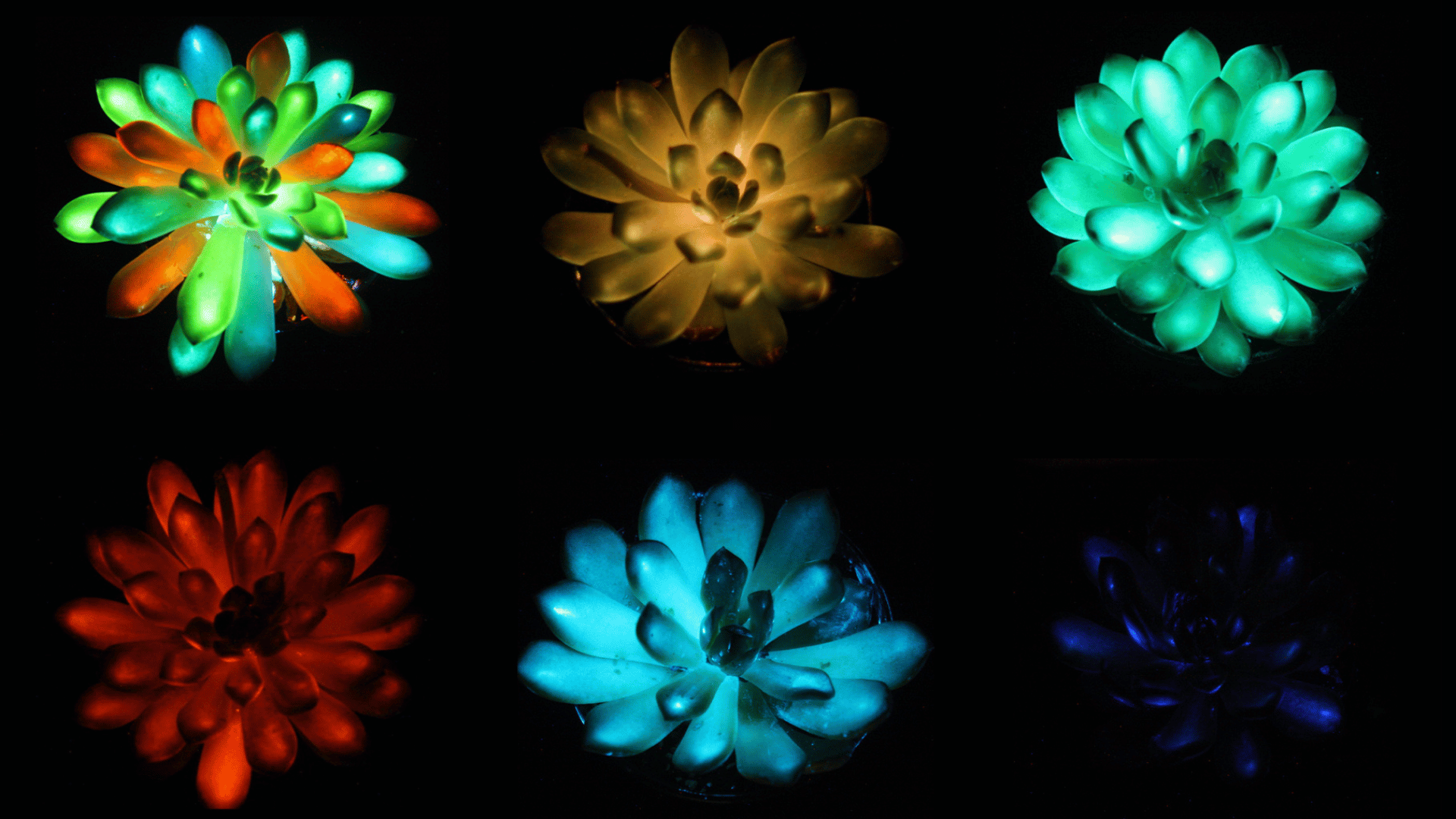Could your favorite night light be replaced by a glowing plant? According to a new study, scientists have found a way to create succulents that can glow in the dark.
“Picture the world of Avatar, where glowing plants light up an entire ecosystem,” study co-author Shuting Liu said in a statement. “We wanted to make that vision possible using materials we already work with in the lab. Imagine glowing trees replacing streetlights.”
Glow-in-the-Dark Succulents

The team used compounds called afterglow phosphor particles to make succulents glow without altering their genes. These particles absorb light and release it slowly over time.
According to Popular Science, the particles were made to be about 7 micrometers so they could successfully travel through the plant’s leaf tissues. Then the particles were injected into several plant species, including rose-shaped succulents in the genus Echeveria and non-succulents, such as golden pothos and bok choy.
“Smaller, nano-sized particles move easily within the plant but are dimmer,” says Liu. “Larger particles glowed brighter but couldn’t travel far inside the plant.”
Of the varieties experimented on, succulents were the only ones that produced a bright glow. This is because their narrow, evenly distributed leaf veins helped to distribute the particles more effectively.
The plants glow with the brightness of a typical night light and recharge using sunlight. After exposure to sunlight or an indoor LED, the succulents reportedly glowed for up to two hours.
“It was really unexpected,” says Liu, noting that she previously thought that plants with more airy tissue structures would perform better in the experiment. “The particles diffused in just seconds, and the entire succulent leaf glowed.”
Different types of phosphors allowed the team to create plants that glowed in different hues, such as yellows, reds, greens, and blues.
Moving forward, researchers behind the project plan to ensure the process is cost-effective and environmentally friendly. They believe the method could offer a more sustainable alternative to low-intensity outdoor or indoor lighting.
“I just find it incredible that an entirely human-made, micro-scale material can come together so seamlessly with the natural structure of a plant,” said Liu. “The way they integrate is almost magical. It creates a special kind of functionality.”







